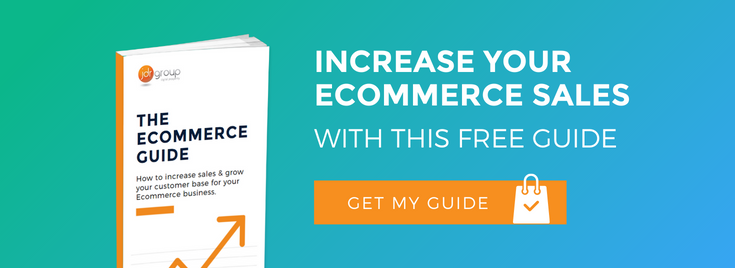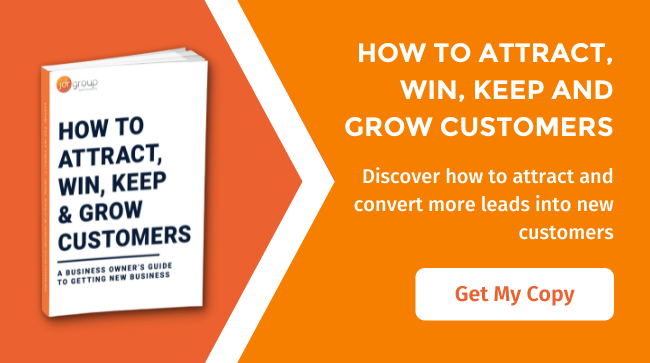How To Create High Converting Product Pages For Your Ecommerce Shop
.png?width=1100&height=750&name=how-to-create-high-converting-product-pages-for-your-ecommerce-shop%20(1).png)
Look at the best converting ecommerce websites and, despite their differences, they all have one thing in common: a clean and engaging product page design. Every element of the page is optimised to make information as accessible as possible to visitors, and to guide conversions through clear calls to action (CTAs).
This philosophy is seen throughout the page design, in the content, and in the way the page UX (user experience) is structured. From Amazon to John Lewis, Asos, Etsy and Wayfair, you’ll notice several design principles that increase engagement and encourage conversions. For example:
DOWNLOAD OUR ONLINE ECOMMERCE SALES GUIDE
Product Pages Optimised For Mobile Customers
With global shoppers making over 70% of their e-commerce purchases through their phones, your product pages should be fully optimised for mobile use, which includes menus, buttons, and forms designed for fingertip interactions. eBay’s product pages, for instance, use an adaptive design code that automatically configures each design element and function to fit the screen size used by the customer.
Social Proof And Transparency
Simply put, your customers are more likely to purchase from a site that conveys respectability and trust, and that provides evidence of customer satisfaction, than from an unknown quantity. Trust building features should, therefore, be incorporated into your page design. These could include prominently placed star ratings and reviews from customers like Amazon and eBay do, if available. Your design should also display vendor Trust Badges, such as your SSL certificate and payment provider logos (e.g. Visa, Apple pay, PayPal et cetera) to reassure your customers about transaction security.
High Quality Visuals
Good product pages should include a range of visuals and multimedia elements to engage your customers and grab their attention. High performing pages typically showcase high resolution images of their products with zoom-in capabilities, allowing customers to inspect products closely and make an informed purchase decision (e.g. the 360° product images and videos on Asos, and Etsy’s product galleries for bespoke items). This reduces hesitation and could increase your sales. These visual and multimedia elements should be placed strategically to catch the visitor’s eye without overwhelming them. For example, John Lewis balances its visual elements with plenty of white space to maintain a clean and calming aesthetic.
Compelling And Persuasive Content
Visuals only go so far to sell products. Compelling and persuasive written content or copy is also essential for making sales online, building the bridge between a customer’s interest and their decision to buy. There are four main principles of good e-commerce sales copy:
- Value proposition: each product page should include a concise and direct value proposition that explains to customers what’s in it for them from making a purchase. No need to write a novel about each item. Clear content helps reduce sales hesitation and increases purchases.
- Emotional triggers: humans aren’t purely logical animals; they also make decisions based on emotion, so your sales copy should play on your customer’s feelings of excitement, nostalgia, exclusivity, or desire in order to prompt action. Think about what is unique about your products, how you want them to make your customers feel, and express this in your content.
- Urgency: online shoppers are notorious procrastinators, with abandoned shopping carts being a major issue for most online retailers. One of the most effective ways of overcoming this hesitation is to inject some urgency into your content. Using phrases such as ‘limited stock’, ‘this item is X person’s basket’, or ‘X hours remaining at this price’, create a fear of missing out (FOMO) response in your customers that motivates them to act quickly. EBay provides a perfect example of this, with countdown timers for their auctions and limited quantity items to push users into making snap purchases.
- Building trust: trust is the backbone of all successful ecommerce transactions, so you should use your written content to build confidence in your customers by addressing any common concerns and highlighting your business’s credibility. Key phrases such as ‘free returns within two weeks’, ‘over 5000 five-star reviews’, or ‘100% satisfaction guaranteed’ all present your shop as a safe and reliable place to spend money. John Lewis’s ‘never knowingly undersold’ slogan is a good example of this, promoting the brand’s reputation for transparency and fairness.
Fast Loading Pages
Page loading speed should be an absolute design priority when creating product pages. Slow loading pages frustrate your customers and can lead to a high bounce rate, whereas fast loading pages can improve your customer satisfaction levels and reduce cart abandonments.
Easy Navigation Around The Store
No customer wants the online equivalent of being lost for hours in Asda! Each product page must be optimised for a positive and enjoyable user experience, and for easy navigation around your store. Do this by organising each product and category in a logical and structured way, making it simple for your customers to find what they need. For instance, Amazon’s top level search bar and drop-down menus allow shoppers to flit seamlessly between millions of product pages, while using filters to refine their search results and identify the items they need. A consistent design across your product pages – with uniform colour schemes, fonts, and layout – will also help your shoppers to feel welcomed and in control as they browse your items, while reducing cognitive strain.
Find Out More
If you’d like to know more about web design best practices for ecommerce businesses and how you can obtain more sales from your product pages, please get in touch with one of the marketing specialists at JDR today by clicking here, or give us a call on 01332 982256.
 Image source: Canva
Image source: Canva

